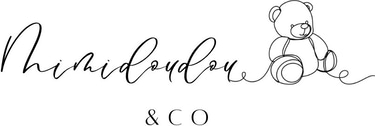Saying goodbye to the cuddly toy: how to help children part with their cuddly toy
"cuddly toy"... Separating this precious object can be tricky for both the child and the parents. Here are some tips to make this transition easier...
Maïlys D
11/21/20241 min read


The cuddly toy, a faithful companion of our little ones, plays an essential role in their comfort and safety. However, it may happen that cuddly toy cannot accompany him everywhere, and the separation of this precious object can prove delicate for both the child and the parents.
Here are some tips to make this transition easier. These tips are valid for a temporary separation, as well as for saying goodbye to the comforter.
1. Prepare the Child
Anticipating the absence of the blanket is crucial. Discuss this time with your child in advance, explaining why they will be parting with it for a while. You can introduce the idea that the blanket will watch over him even if they are separated. Start with a short separation and gradually increase the separation time.
2. Create a Farewell Ritual
Organize a small ceremony to say goodbye to the blanket. This could include a story, a drawing or even a little note written for him. This ritual allows the child to become aware of separation while valuing the comforter.
3. Introduce Substitutes
Offer your child alternatives to the comforter, such as a soft blanket or a new comforting object that they can bring. This can help him fill the void left by his blanket.
4. Encourage Independence
Remind your child that growing up involves changes. Encourage him to explore new activities without his blanket, while offering him support and reassurance.
5. Patience and Understanding
Every child is different. Be patient and understand that the process may take time. Offer loving support during this time of transition.
Parents can help their children gradually separate from their cuddly toy in a gentle and positive way, thus promoting their emotional development and independence. Even if we often keep it for life!
© Mimidoudou 2024. All rights reserved.
Mimi's discounts :
Do you want to treat yourself?
So enjoy!
-10% from 15€ of purchase with the code MIMIDOUDOU10
-20% from 50€ of purchase with the code MIMIDOUDOU20
-30% from 100€ of purchase with the code MIMIDOUDOU30
(Voucher to be applied at checkout)


Fast Delivery
Worldwide with tracking Shipping within 72 hours


100% secure payment
Secure credit card, ApplePay, GooglePay and Paypal payment with SSL certificate
Contact us
contact@mimidoudouandco.com


